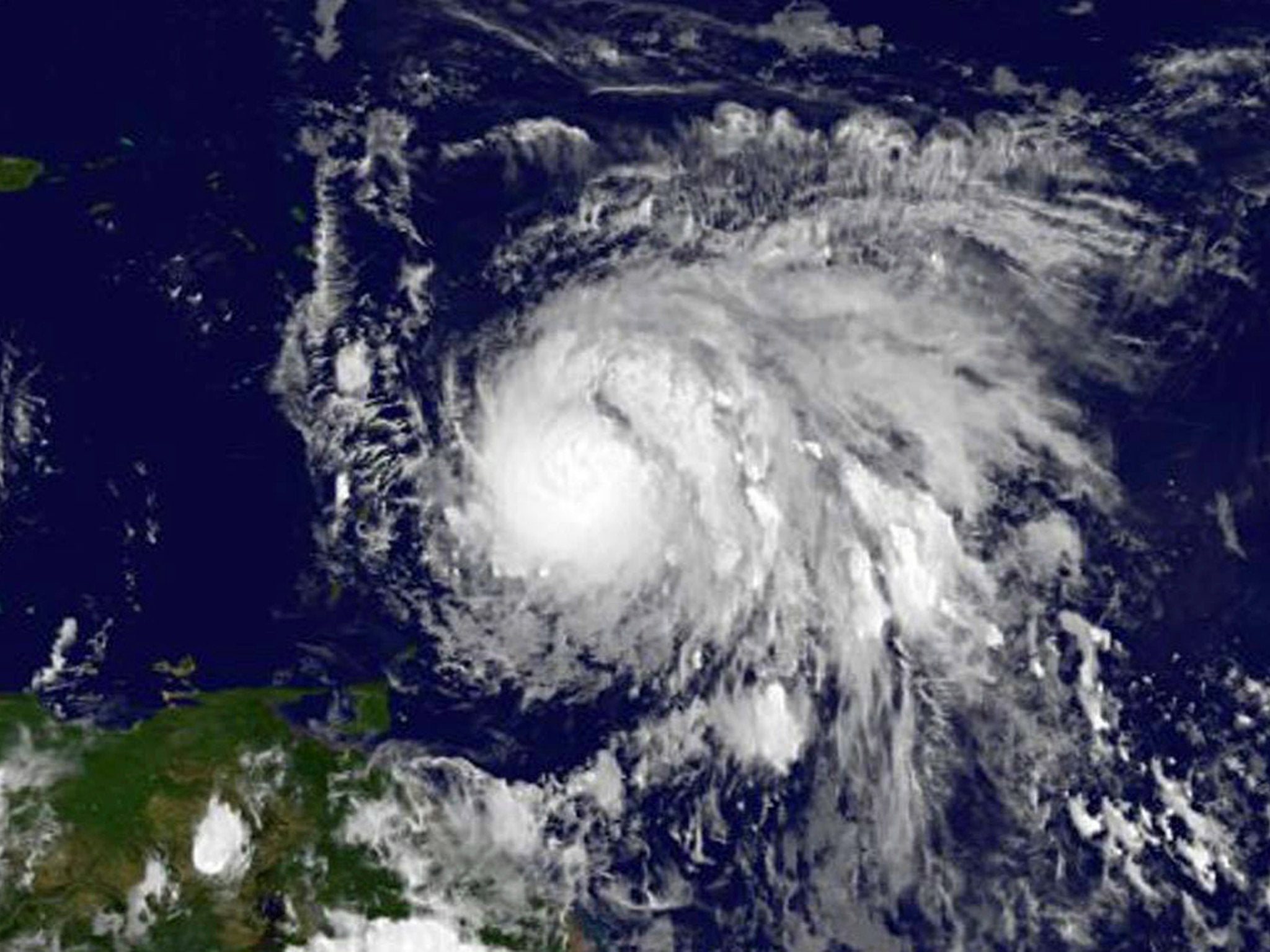Maria strengthens to major Category 3 hurricane
It is too early to tell if it will hit the United States or not

Hurricane Maria has strengthened to a Category 3 storm as it heads toward the Caribbean, according to the National Hurricane Center (NHC).
Maria was “rapidly” intensifying into a major hurricane, according to the NHC. The eye is expected to move through the Leeward Islands later on Monday. The storm's centre was about 60 miles (95 kilometres) east of Martinique, with maximum sustained winds of 120 mph (195 kph).
The storm is on a path that would take it near many of the islands wrecked by Hurricane Irma and on toward Puerto Rico, the Dominican Republic and Haiti. Hurricane warnings were posted for Guadeloupe, Dominica, St. Kitts, Nevis, Montserrat and Martinique.
The storm's future path is unclear at this point. After hitting those Caribbean islands over the next few days, the storm has the potential to move north and hit Florida, or potentially the east coast of the US.
"We may luck out and it turns north before reaching Florida," Dave Samuhel, an AccuWeather meteorologist, said. "Unfortunately, it looks like blocking pressure could force it into Florida. Definitely something we are watching."
Maria is expected to experience further rapid strengthening over the next 48 hours, according to the NHC. The storm may end up having winds as high as 150 mph Tuesday, which would make it a Category 4 hurricane.
"This storm promises to be catastrophic for our island," Ernesto Morales, with the National Weather Service in San Juan, said. "All of Puerto Rico will experience hurricane-force winds."
Before Maria hits Puerto Rico, however, the storm is likely to impact the US Virgin Islands Tuesday night or Wednesday. People there are lining up to flee the storm, with the devastation of Hurricane Irma still weighing heavy on their mind. Irma hit there on September 7 as a Category 5 storm with sustained winds of 185 mph. That storm blew apart homes and businesses, and power is expected to be out there for months.
Haiti could experience the wrath of the storm on Wednesday, and officials there have set up shelters capable of housing 100,000 evacuees if necessary.
Whether Maria hits the United States depends on steering currents in the upper atmosphere, which can't be predicted a week in advance. The east coast is already staring down the potential for tropical storm level winds from Hurricane Jose, and warnings have been posted for a good portion of the southern New England coast.
The US has already experienced a devastating hurricane season after weathering major impacts from both Hurricane Irma and Hurricane Harvey. Irma left millions without power in Florida, and destroyed hundreds of homes. Harvey inundated Houston with torrential flooding, leaving thousands stranded in the city. All told, Harvey and Irma may have caused more than $150 billion in damages together, which would put those two storms on par with the costs associated with Hurricane Katrina.
Those costs will be shouldered by several different sources, including by individuals themselves. In addition to those private citizens, help will also come from the federal government, and insurers.
Join our commenting forum
Join thought-provoking conversations, follow other Independent readers and see their replies
Comments